With Brisbane highly likely to get the Olympics in 2032, now is the time to start planning the dressage high-performance program that will give you a serious opportunity to be one of those Australian team riders selected.
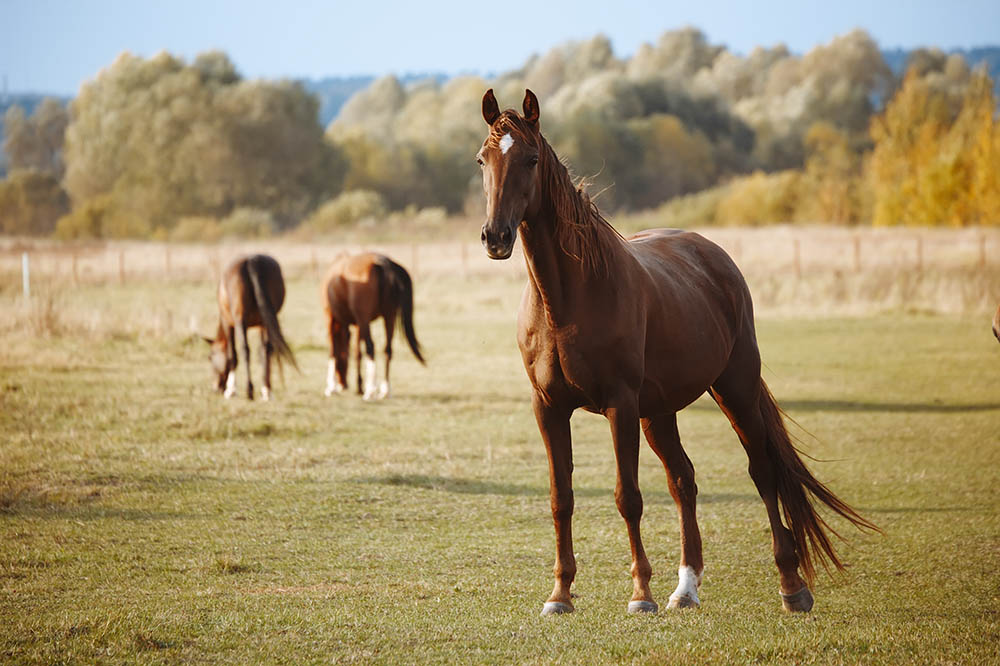
“You have to make a plan.
A realistic plan.”
To ride for your country at the Olympics when it is hosting them is probably the number one biggest dream you could possibly aspire to!
Last month I did a high-performance training program — or roughly outlined one — which focused on the Australian three-day event team. Eventing in Australia is red hot and has historically won both team and individual gold medals. Actually, lots of them! My goodness, the Australian eventing riders are indeed red-hot good!
So, what about the dressage riders? As individual gold medallists we are a long way away. Well, 11 years is also a long way away and individual gold medals are definitely something we could do if we plan to do it. When I say we, please don’t think that anyone other than you — yes, I mean you who is reading this column will be motivated enough to put a gold medal plan into action. Honestly, you cannot wait for Equestrian Australia or the Australian Sports Commission or the Australian Olympic Committee to start marshalling and training our superstars for 2032. That is a nice dream but that is guaranteed not going to happen.
Right now, the Australian dressage team is ranking around No. 9 in the world and our individual performances are ranking from mid-20s to 60s in the world. A little bit depressing when you look at the big picture with ideas of gold medals. However, there have been in recent times countries that have engineered miraculous turnarounds in 11 years. At the Sydney 2000 Olympics where Australia performed exceptionally well and came 6th in the world, England on the other hand came 8th.
Twelve years later England hosted the Olympics in 2012 in London and guess who won the individual gold and team gold medals? Yep, you got it. England. What’s more an unknown English girl called Charlotte Dujardin not only won the individual gold medal but went on to dominate dressage at the top end ever since, winning the individual gold medal again at the Rio de Janeiro Olympics in 2016. Team Great Britain had to settle for silver team medals at the Rio Olympics. Gee whizz! What a disappointment! Not! What a fantastic story for a nation that not so long ago was seriously more in touch with hunting and chasing foxes across the countryside and sipping lots of gin from their hip flasks rather than riding dressage. Don’t tell me that we Australians cannot win dressage Olympic gold medals in 2032.
The secret… the secret is “if you fail to plan, you are planning to fail”. You have to make a plan. A realistic plan. This means lots of hard work, but believe it or not there are going to be a lot of people who do work hard and who do have the potential to make a difference to the Australian results in 2032. The problem is that they will forget to plan. Hard work is something we Australians can do, but planning, especially in the equestrian disciplines, is just something we Australians don’t do. We especially don’t do this at our administration level. So, it’s up to you.

“Being a nobody at this point
in time is no problem…”
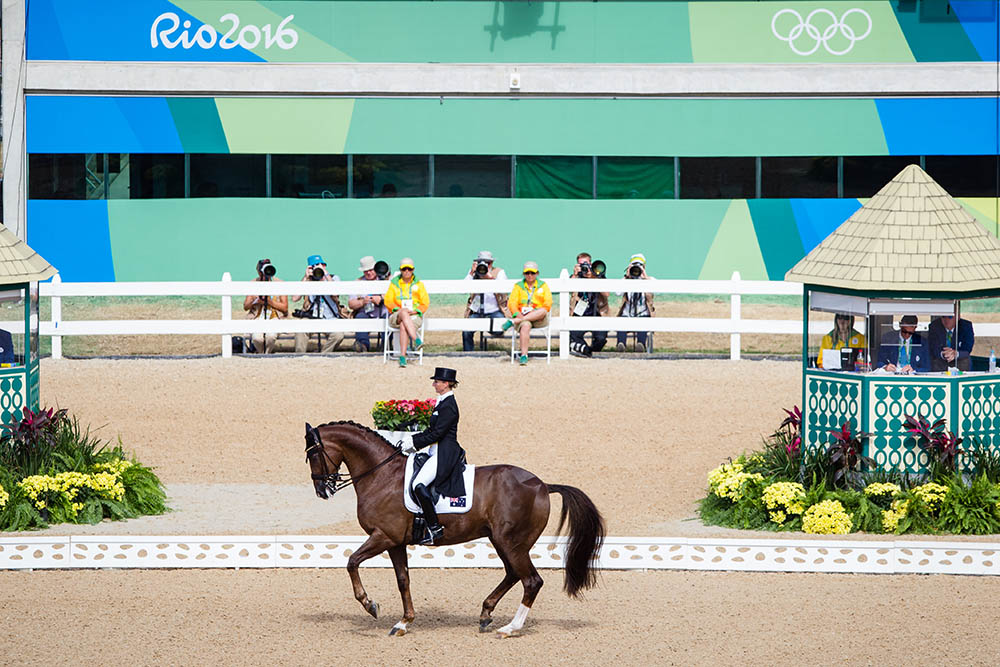
VITAL STATISTICS
Following is critical information, which you need to consider whilst making a plan.
The average age of an Olympic dressage gold medallist is 31 years. That means that the most perfectly positioned dressage riders in Australia to emulate the English girl Charlotte Dujardin are right at this moment going to be between 17 and 23. Being a nobody at this point in time is no problem for a potential Brisbane Olympics individual gold medallist!
The average age for the Australian dressage team riders at Rio de Janeiro was 48. These Australian riders — who, incidentally, were all women — have done the most amazing job front-running dressage for Australia. Without any undue respect, most of these riders if not all of them will have moved over for a whole new generation of Australian dressage riders come the Brisbane Olympics in 2032. So inevitably, big changes are about to happen whether you decide you would like to be part of it or not.
The average age of an individual gold medallist horse in the dressage at the Olympics is 13 years of age. This actually shocked me because in years gone by these horses were much older. The Dutch horse Bonfire ridden by Anky van Grunsven won the individual gold medal at the Sydney 2000 Olympics when he was 17. Anyway, 13 it is. These are statistics taken over the last nine Olympics. These are not a reflection of my opinion. These are just facts. So the gold medal horse for Brisbane is quite possibly a two-year-old still in the paddock and not yet broken in. That means that quite possibly a young, well-bred Warmblood two-year-old roaming around one of our Australian paddocks can be destiny-bound for a gold medal if he can be found by someone with the passion, the ability to work hard and, most of all, a big picture plan. At this stage these youngsters are not going to be hugely expensive. Actually, it is possible with the current floods, recent bushfires, years and years of drought and Covid-19 that young horses capable of these performances could be dirt cheap. What an opportunity! Australia is the land of opportunity. You just need to have the courage to have a go!
The average individual gold medallist will be competing at their second Olympics when they win their first gold medal. This is a statistic… and to just keep it in perspective, Reiner Klimke won his first individual gold medal at his final Games, which were his sixth Olympics at Los Angeles in 1984. However, both Nicole Uphoff in 1988 and Charlotte Dujardin in 2012 won their first individual gold medals at their first Olympics. So if you are fronting up for your first Olympics in 2032 in Brisbane, you need to stay on plan and go for a gold medal. Both Nicole and Charlotte fronted up at the next Olympics and won individual gold again!
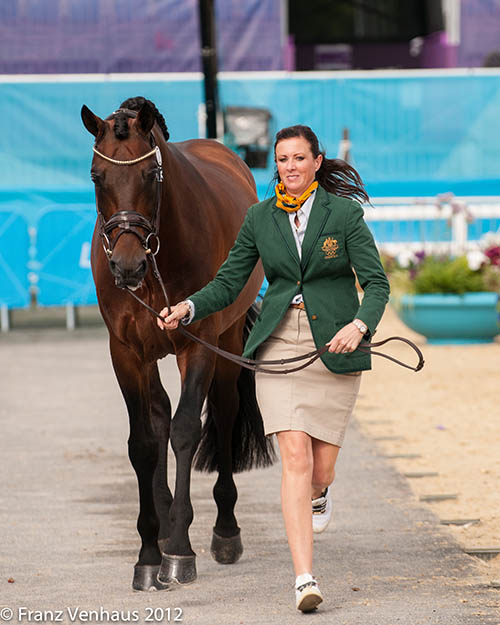
“The gold medal horse for Brisbane is quite possibly a two-year-old still in the paddock.”
WOMEN vs MEN
Dressage, like all the equestrian Olympic disciplines, has men and women competing against each other as equals. It is very interesting to note that 89% of individual gold medallists are women. There is a message in this. Strength is absolutely not the determining factor on how well a rider can perform. The real athlete is the horse while the rider is the partner who cultivates confidence, searches for knowledge, honours rapport, looks out for the horse’s wellbeing and is dedicated to the partnership and the big picture program. We in Australia come from the wide brown land where life and death is part of our heritage. We actually do have a wonderful tradition of horsemanship, which is an advantage, however, being powerful and yet sympathetic at the same time and going out in a hail storm to put extra rugs on our special horse is something that we men of Australia need to come to terms with. If we can’t get past the life and death of the great outback, it will block us from exploring the fascinating worlds of horses wanting to perform for us and discovering expression. It is my opinion that Grand Prix dressage is nothing more than a tradesman level of riding. The pursuit of excellence starts at Grand Prix. It is also my belief that Australian riders are actually as good as it gets, however, we do need to modify our thinking. It’s not our riding that is letting us down.
As an Australian, I grew up on the Stock Horse and then the Thoroughbred. In eventing, the Thoroughbred or Thoroughbred crosses are absolutely Olympic medal material. However, in dressage the individual gold medallists are all Warmbloods. Full stop! Of course, there are lots of different Warmbloods and within each Warmblood breed there are some that are good and some that are indifferent. I am not a great believer in such a thing as bad horses. I think some horses are born in such a way that they are always going to be difficult to communicate with, and consequently, if those individuals are not exposed to really advanced horse people, they do become difficult horses. The shortfall, nevertheless, is with us the riders.
When you start putting a program together you do need to start backwards. You need to firstly identify where you want to go. I am saying individual gold medallists!
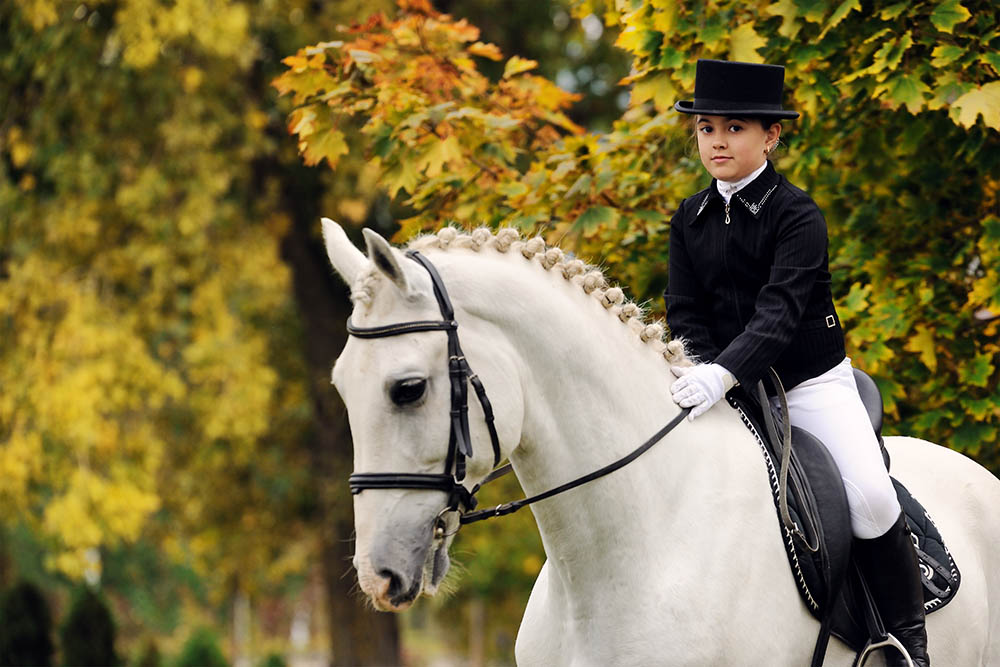
“The pursuit of excellence
starts at Grand Prix.”
SCORES UNHEARD OF
So, what sort of score do we need to achieve to win an individual gold medal at the 2032 Brisbane Olympics? To make a long story short, Reiner Klimke and Ahlerich won the 1984 Los Angeles individual dressage gold medal on 73.37%. In 2016 Charlotte Dujardin and Valegro won the Grand Prix on 85.071%. So that means statistically the individual gold medallist will average 1.46% more than the previous Olympic gold medallist. That is currently the rate of improvement that dressage is experiencing worldwide. (Note we are looking at scores from the Grand Prix test; the Olympic format has changed over the years and although the Freestyle technically decides the individual medals, we’ll use the Grand Prix test scores achieved by individual gold medallists here as a benchmark.)
So, according to this statistic we can expect this year the individual gold medallist at Tokyo to score around 86.53%. We can expect in 2024 the Paris individual gold medallist to score around 87.99%. We can expect the Los Angeles individual gold medallist in 2028 to score around 89.45%. And in Brisbane in 2032 we can expect the individual gold medallist to crack 90% and score something like 90.91%. Just to keep everything in perspective, if you score a 7 for each movement in a Grand Prix test that means the judge thinks the movement was “fairly good”. A seven for every movement will give you 70%. If you score an 8 for each movement that means that the judge thinks the movement was “good”. An eight for every movement will give you a score of 80%. By the time we reach Brisbane in 2032, the judges are anticipating that the standard will have risen to where they think some riders and some horses will produce a Grand Prix test that might be deemed “very good”. Very good is 9. So that is what we are all planning for, we have to program for a “very good” Grand Prix dressage test.
So how do you go about planning for a very good Grand Prix dressage test? That is the gold medal question and it can be done but it will take courage and you will need a very carefully thought-out high-performance program.
In my column last month where I dealt with eventing, I do at this point of the column start to actually deal with my thoughts on the actual make-up and timing in a high-performance program. To start with, those of you interested should go back and read that column because much of the structure and considerations are similar. What you have to keep as the goal in this dressage high-performance program is the 90.91% Grand Prix outcome.
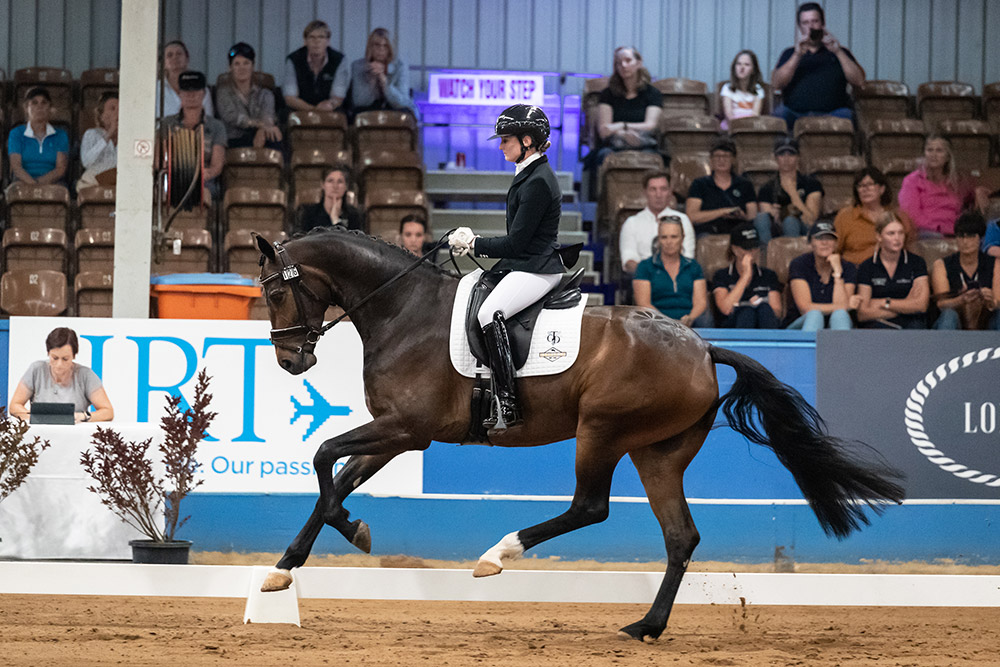
“Australian riders are actually
as good as it gets.”
THE PATHWAY
- Just briefly, the partnership should be competing at Grand Prix level by 2029.
- The program will probably have the partnership at Advanced/Prix St Georges level by 2027.
- Medium level should be 2026.
- Novice level at 2024.
- If you were to purchase a two-year-old now, that would mean that by the time he/she is five you would be working your way through the Novice classes.
The focus of the entire training program will be on the quality of the paces, which is to be maintained from go to whoa, i.e., from Preliminary all the way to Grand Prix.
Keep in mind that to train to Grand Prix it is a pathway where the horses slowly become more and more collected and in self-carriage. At the end in Grand Prix is piaffe and passage and canter pirouettes and one-time changes. This is the most collected work you can do. Training is all about gently increasing your collection. Unfortunately, winning in competition is all about expansion. Expansion involves a bigger moment of suspension. Collection involves the smallest moment of suspension. Training and competing are not as compatible as you would expect in the first instance. However, once you do reach Grand Prix then expansion is critical for winning; however, collection is critical to do the Grand Prix. My advice is, yes, you do need to win, however, during training up to and including your early days in Grand Prix, you do need to prioritise collection. The levels of competition should be used for training and qualifying for the next level rather than getting too carried away with competing.
Personally, I think that if you wish to produce a high-quality Grand Prix horse you do need to have eyes on the ground. (Someone watching who is part of your training program). Eyes on the ground can be mum or dad, and videoing each training session and then you forcing yourself to look at it each day as part of the 90.91% high-performance program.
I also think you need to involve a coach who is experienced in Grand Prix on a weekly basis. I think this is more of a possibility than ever before with the advent of Zoom and video cameras that will automatically follow you whilst you are riding. This all sounds terrifying to me but it is nothing if the trade-off is 90.91% at Brisbane in 2032!
HORSES FOR COURSES
When buying a young horse, the paces are critical, however, I think even more critical is the breeding of the youngster. If a young horse has a father and a mother who have both done Grand Prix it is very likely that this youngster will also do Grand Prix. The genetics are important. Donnerhall is far and away the most influential Grand Prix bloodline ever. You will find lots of this blood running around in Australian bush paddocks and backyards. Donnerhall is not the fanciest producer but is very technical, which is critical. A Donnerhall youngster when piaffing is very likely to stay very straight with its footfall and not step on itself, damaging coronets, which is extremely painful. As a result the Donnerhalls become confident in piaffe and trained properly will try very hard for you. Other genetics may well be talented in piaffe but plait a little bit and so step on themselves once piaffing on the spot. This hurts like hell and so they resent piaffe and are inclined to clear out. Lots of the other advanced movements are similar. Genetics are important if you are going to have a horse which is your partner and who is going to try his very hardest.
I know that is very brief and very sketchy in terms of your journey to achieving 90.91% at the Brisbane 2032 Olympics, however, it is a start and from here you certainly can start asking questions. Winning gold medals is without question a possibility, but it will take hard work and a big picture high-performance program. EQ
Cheers, Heath
YOU MIGHT ALSO LIKE TO READ:
‘Start Planning for Brisbane 2032 (Eventing)’ – Ryan’s Rave (Equestrian Life, March 2021)
‘Vale Di Schaeffer, Warrior of Australian Eventing’ – Ryan’s Rave (Equestrian Life, February 2021)
‘Back to the Future’ – Ryan’s Rave (Equestrian Life, January 2021)
‘A Busy, Busy, Busy Christmas at Ryans’ – Ryan’s Rave (Equestrian Life, December 2020)
‘Hit the Reset Button for Tokyo 2021’ – Ryan’s Rave (Equestrian Life, November 2020)
‘Olympics Full Steam Ahead’ – Ryan’s Rave (Equestrian Life, October 2020)
‘A New EA For All Of Us, Hopefully’ – Ryan’s Rave (Equestrian Life, September 2020)
‘EA Administration & Hopefully a Future’ – Ryan’s Rave (Equestrian Life, August 2020)
‘EA’s Voluntary Administration’ – Ryan’s Rave (Equestrian Life, July 2020)
‘What I Look For in an Eventing Horse’ – Ryan’s Rave (Equestrian Life, June 2020)
‘Novel Way to Deal With Lockdown’ – Ryan’s Rave (Equestrian Life, May 2020)

